Sustainable Grounds
at the University of Michigan
At the University of Michigan in Ann Arbor, we use a variety of approaches to manage land sustainably, from bees and goats to prairies and storm water management.
Starting in 2019, U-M has consistently achieved its goal to reduce chemical applications to campus landscapes by 40% by 2025 to protect the Huron River water quality. U-M has reduced chemical applications by 45% as of 2022—even as the amount of maintained green space has grown.
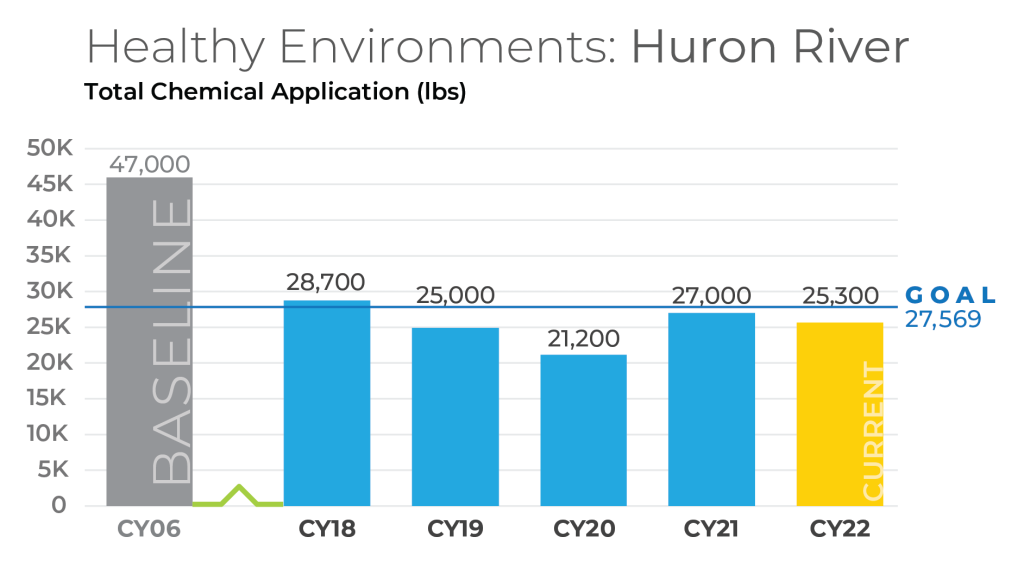
The Huron River is Ann Arbor’s drinking water source, so we all have a vested interest in keeping it clean!
The Huron River flowing through Nichols Arboretum. Photo by Scott Soderberg.
Over 80% of campus is maintained using organic fertilizer – the single biggest contributor to our chemical reduction success.
The lawns at Ingalls Mall (pictured here) and the Diag are treated with organic fertilizer and low-impact weed control.
"BEE" GOOD TO EARTH
One of the ways we reduce pesticide and fertilizer use – and achieve a wide range of other benefits – is by expanding natural areas. Compared to grassy lawns, natural landscaping and prairies:
- Require fewer chemicals – better for water quality
- Require less or no mowing – saving money and reducing greenhouse gas emissions
- Require less or no irrigation – saving water
- Provide habitat for wildlife
- Often have colorful wildflowers that are pleasing to the eye
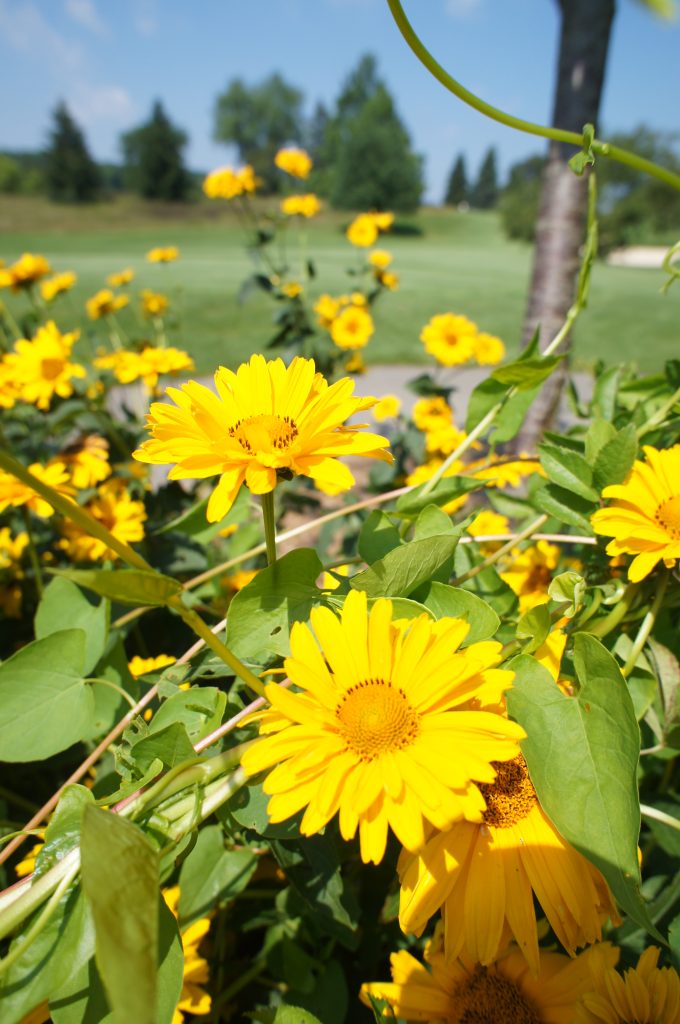
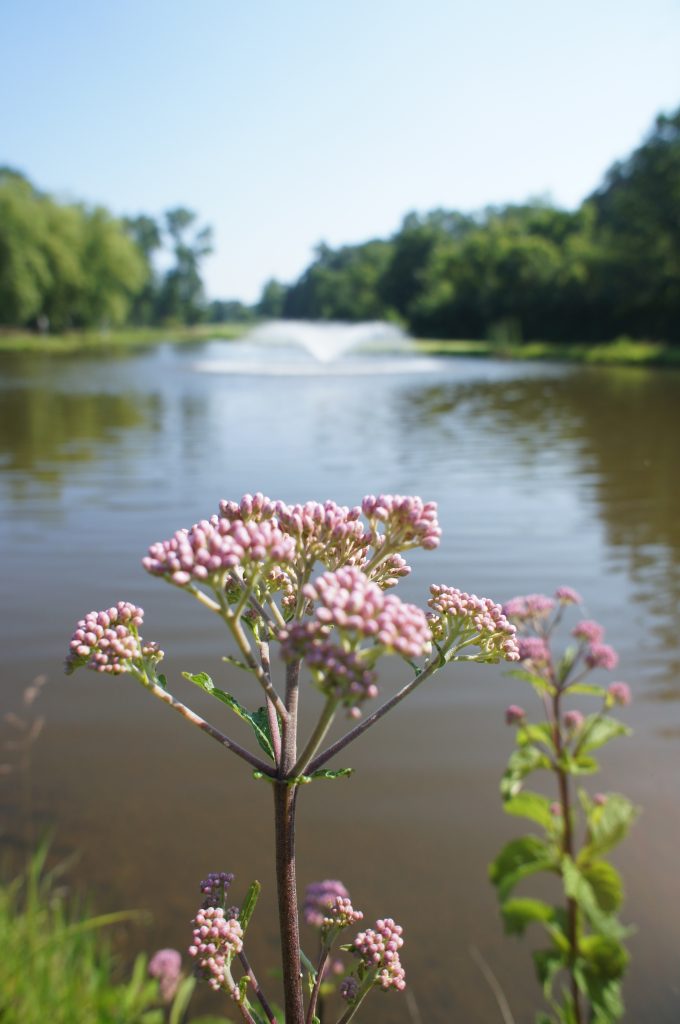
Bees, butterflies, and other pollinators are essential to our food supply. They are experiencing a worrisome population decline, due in part to habitat loss. To help out, we plant pollinator gardens to provide them with abundant food and a place to rest.
For example, Grounds Services turned this area of lawn along Bonisteel Blvd and Murfin Ave on North Campus into a pollinator garden.

Students are active participants as well. A 2020-21 SEAS student project focused on comprehensive pollinator planning to enhance habitat and awareness on campus. Their efforts helped lay the groundwork for the Ann Arbor campus to achieve Bee Campus USA certification. Check out this student-produced podcast episode about pollinator conservation efforts on campus that contributed to Bee Campus certification (min 9:15), among other pollinator topics!

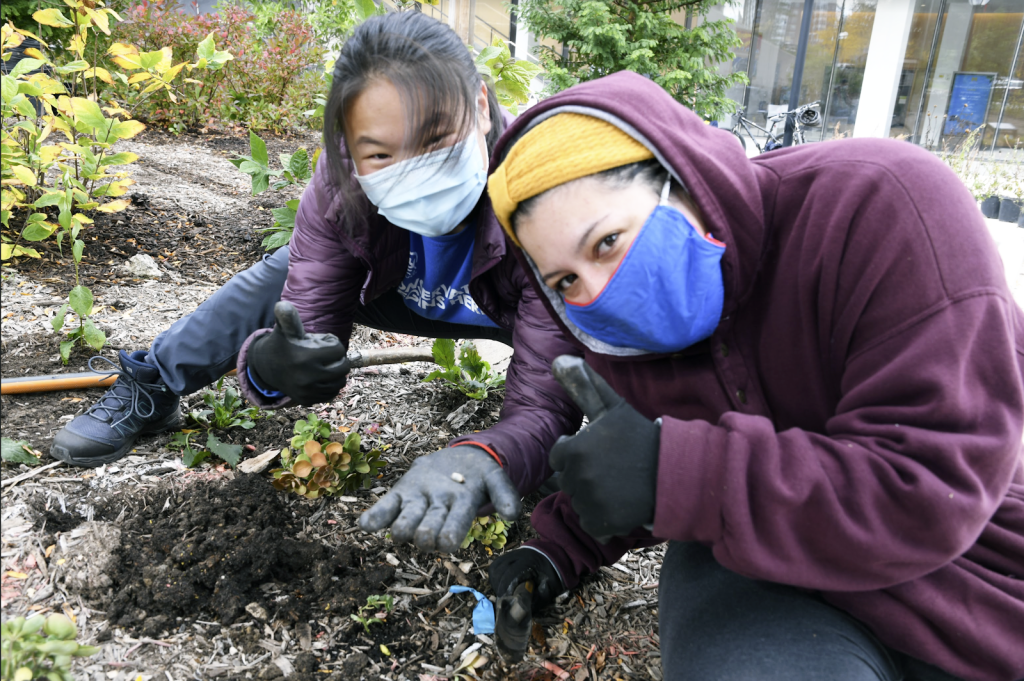
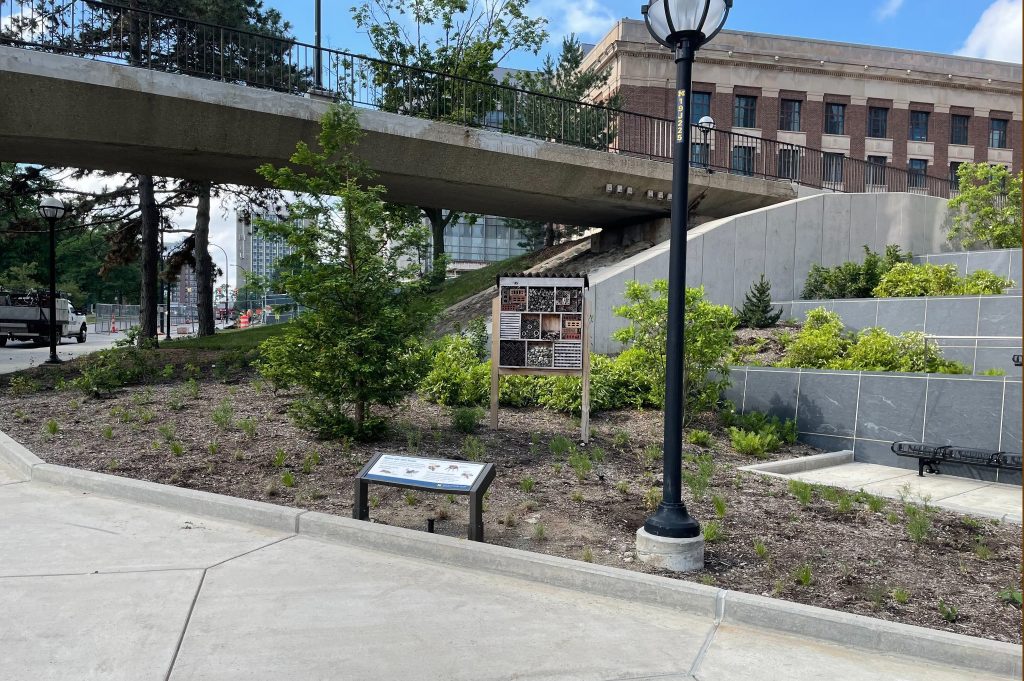
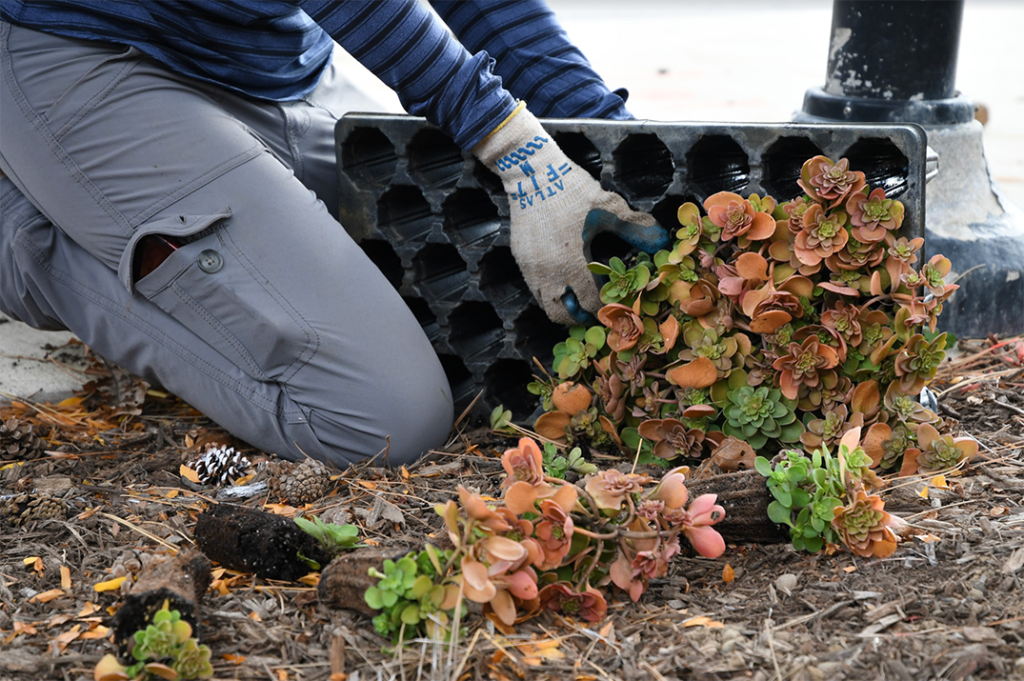
SEAS students created a demonstration pollinator garden near the Natural History Museum.
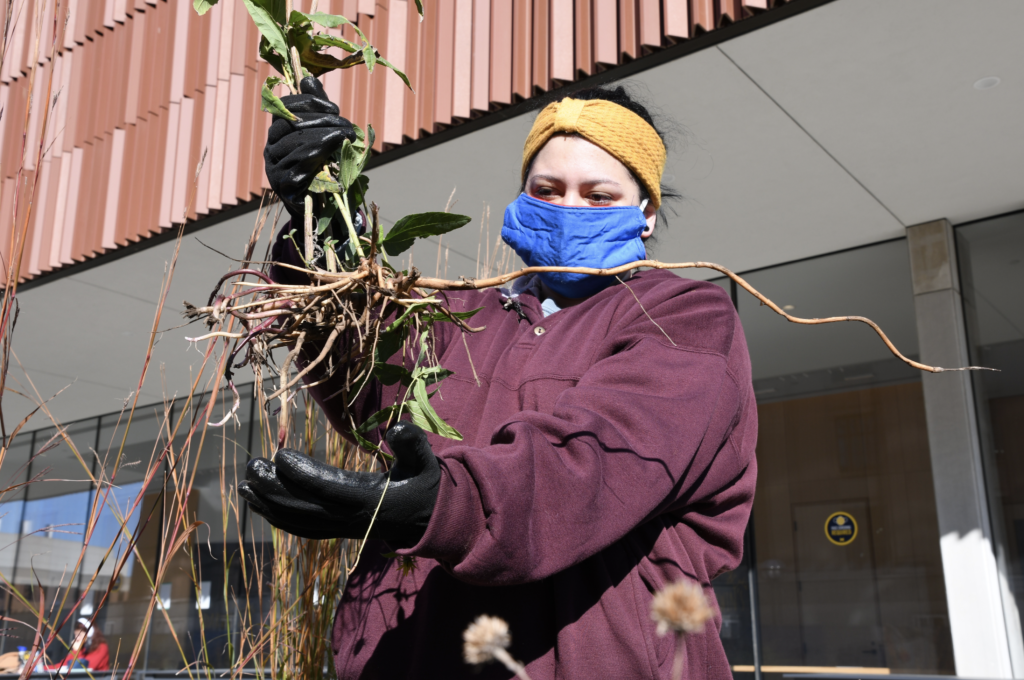
Upper right: students Zoe Bliss and Savanna Delise.
30+ acres of manicured lawn have been replaced with natural landscaping over the past decade
Both golf courses (U-M Golf Course and Radrick Farms Golf Course) and Matthaei Botanical Gardens have installed bee hives. Good for plants and bees—and for experiential learning!
Beekeeping at Matthaei Botanical Gardens. Photo by Andrew Mills.
GOATS
Sometimes managing land sustainably requires creative solutions…like four-legged lawnmowers! Radrick Farms periodically brings in goats to control vegetation naturally.
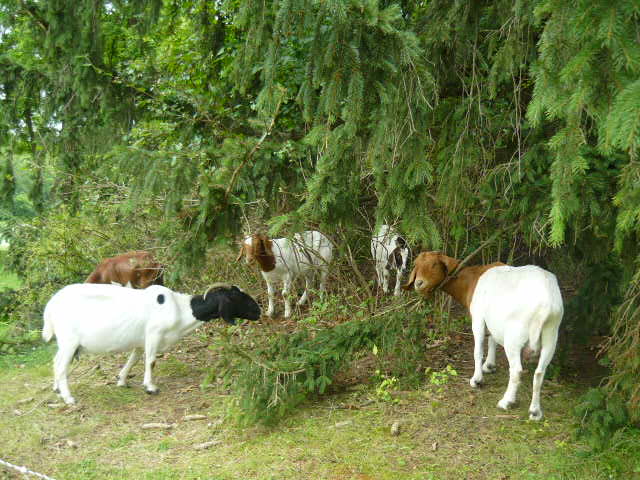
Goats grazing at Radrick Farms
Goats are especially practical for steep hillsides and for keeping invasive plants in check. As the term suggests, invasive plants are adept at taking over a landscape and are often nearly impossible to eradicate. Goats will eat almost anything (including thorns and poison ivy) so they’re perfect for the job.
WORKING WITH FIRE
Another practical way we manage campus landscapes is through prescribed burns. Our local ecosystems are fire-dependent. Until early settlers began suppressing fire in the early 1700s, natural fires enriched the soil, removed dead vegetation, and prevented non-native plants from taking over. Without fire, the natural balance is disrupted.

By reintroducing fire, we are reinstating an essential ecosystem process. Fire controls invasive plants, allowing woodlots and prairies to flourish.
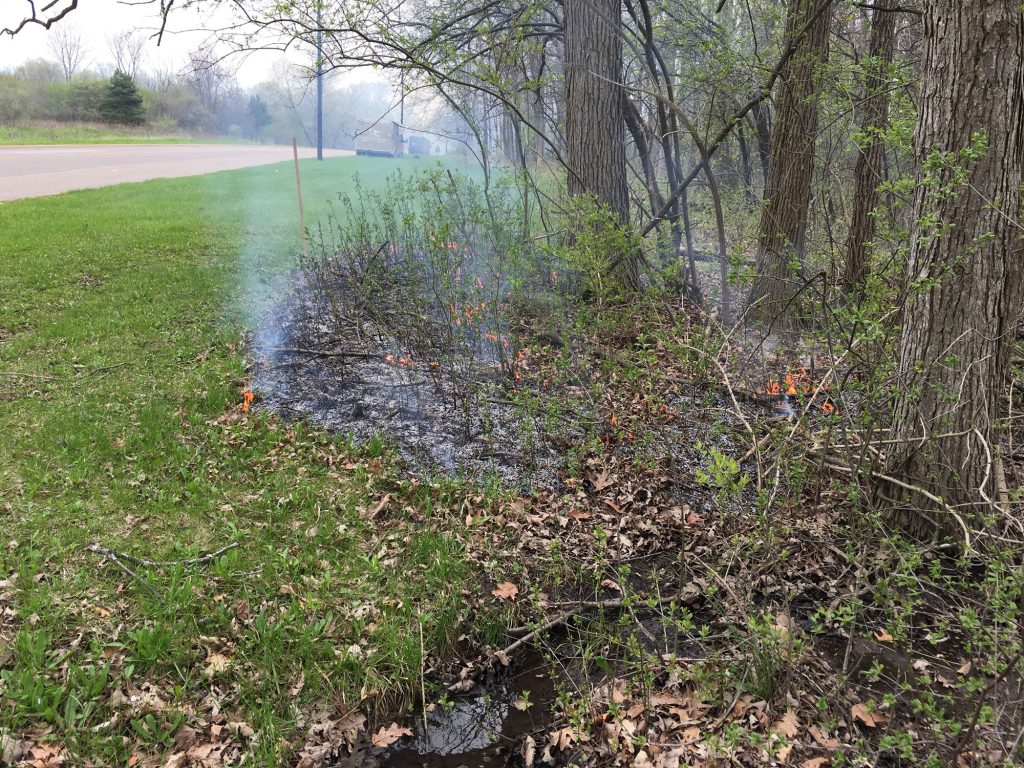
Prescribed burn near Northwood V on North Campus
FORESTRY AND COMPOSTING
U-M has over 17,000 individual campus trees and an additional 300 acres of woodlots, which improve air quality and store carbon. On North Campus alone, 198 acres of woodlots store more than 5,000 tons of carbon and remove an additional 66 tons of carbon from the atmosphere each year.
Maintaining healthy gardens and trees on a campus so big requires a lot of compost and mulch. Fortunately, U-M has a well-established process for producing our own compost and mulch.
The Grounds Services mulching operation.
All clippings, collected leaves, and downed trees stay on-site and are repurposed into compost and mulch for our campus grounds.
Fresh mulch keeps the weeds at bay around the Arriving Home sculpture.
STORM WATER MANAGEMENT
Too much water at once can cause big problems, like erosion, flooding, and run-off into creeks and rivers. Sustainable grounds management includes managing storm water in both natural and built areas.
Rain gardens are an effective way of reducing run-off. By absorbing rain, they reduce the amount of water that rushes through storm drains, carrying trash, chemicals, and sediment to creeks and rivers.
This rain garden at Munger Graduate Residences is both attractive and effective.
Storm water management also includes infrastructure you can't readily see for yourself, such as underground infiltration basins. Learn about some of U-M's major storm water projects in a related presentation:
Units across U-M are proud to incorporate sustainability into their work caring for our land.
- Grounds Services
- Matthaei Botanical Gardens and Nichols Arboretum
- U-M Golf Course and Radrick Farms Golf Course
- Environment, Health and Safety
Together, we can make campus even more beautiful and enjoyable while striving toward our 2025 goal to protect the Huron River!
The Huron River flowing through Nichols Arboretum. Photo by Scott Soderberg.


